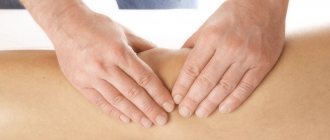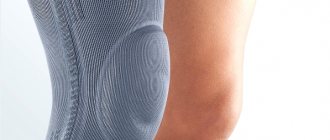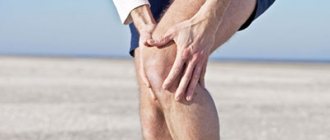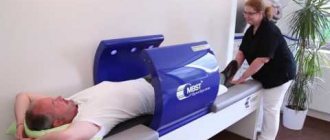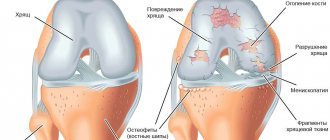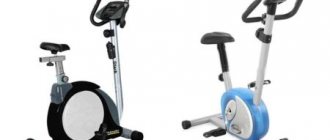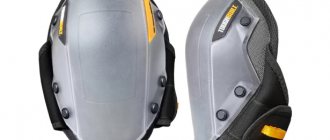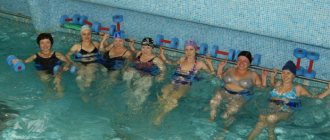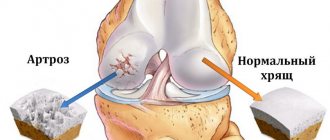Articles Knee bandages are one of the most frequently purchased orthopedic devices among all orthopedic devices. During movement, this area is subject to particularly severe stress. The use of a knee brace is recommended while recovering from injury or surgery. This product has another important task - it is capable of preventing injuries during sports training and intense physical activity.
Cost of treatment in the field of Physiotherapy
| Services list | Price, rub |
| Initial appointment with consultation with a physiotherapist | 1 600 |
| Physiotherapist consultations during the cycle | for free |
| Shock wave therapy, 1 procedure | 2 000 |
| Khivamat - therapy | 2 200 |
| Individual lesson with a kinesiotherapist instructor | 2 700 |
| Acupuncture | 2 500 |
| Manual therapy 1 department (15 min.) | 2 700 |
| Osteopathic correction | 7 500 |
Contact us
Call now
8 (495) 803-27-45
Make an appointment through our service
Make an appointment
How to choose a knee brace based on the degree of fixation
Knee braces are divided into three types according to the degree of fixation:
- soft – optimal in the initial stages of arthrosis, as well as during the rehabilitation period after endoprosthetics;
- medium – suitable when the pain syndrome progresses, in particular at the second stage;
- tight – created specifically for severe forms of arthrosis with severe joint deformities.
Sometimes it’s worth buying 2 knee pads: for example, an articulated one - for walking and a warming one - for home
Main symptoms
- The following signs signal the disease: Acute pain. Unpleasant sensations intensify with physical activity. Periodically, the pain syndrome may disappear, but returns with exacerbation.
- Accumulation of fluid around the affected joint. If left untreated, you may develop a Baker's cyst, which can only be removed through surgery.
- Crunching sound when moving. The joint becomes excessively mobile. The patient experiences discomfort.
- Deterioration of motor functions of the joint. He stops bending and unbending. There is pain when walking.
- Elevated temperature is the body’s protective reaction to the inflammatory process.
- Knee deformity. Untreated arthrosis provokes displacement of cartilage.
At stage 1 of the disease, joint mobility decreases slightly. A small number of osteophytes form at the edges of the bone plates. With II degree damage, pain is observed, crunching and clicking sounds are heard. The joint space narrows noticeably.
At stage 3, the knee joint becomes deformed. Mobility is severely limited. The joint space is partially or completely fused. A large number of bone growths are formed.
Sizing
To achieve the desired result when using orthopedic knee braces, you need to choose the right size. To do this, take measurements. For this you will need a tailor's tape with centimeters marked on it. With its help, leg circumference is measured in the following areas:
- The distance from the knee is 15 cm up.
- Mid knee.
- The distance from the knee is 15 cm down.
When choosing orthoses, you need to look at what size chart the manufacturers indicate. For models that have a certain marking on the packaging, the actual size does not always coincide with generally accepted parameters.
Using your own measurements, you can choose the perfect fit for your knee joint. You can use them for comparison with the size chart printed on the product packaging or contained in the instructions.
How does physiotherapy work?
Due to the inflammatory process in the musculoskeletal tissue, metabolism is disrupted. Physiotherapy for arthrosis can solve many problems, having a positive effect on the body as a whole.
Procedure:
- Promotes rapid absorption of active drug components by cartilage tissues. Thanks to this, it is possible to reduce the dosage of drugs, which reduces the drug load on the body.
- Facilitates the body's task in people with chronic diseases. Allows drug components to work more effectively on the affected area.
- Improves the patient's physical condition. It has a beneficial effect on the immune system, so recovery occurs faster.
Treatment of arthrosis with physiotherapy has a positive effect on the effectiveness of prescribed drugs.
What are the possible complications?
Three types of complications can occur during knee replacement surgery: intraoperative complications, primary complications, and secondary complications. They are related to the nature of the procedure itself and exclude possible risks associated with anesthesia or risks associated with the age and medical history of the patient.
Three types of complications:
- Complications arising during surgery : these are exceptional and can be caused, for example, by injury to a large artery of the lower limb (popliteal artery) or a nerve (external popliteal sciatic nerve) during surgery.
- Primary complications : The main complication of this type is infection. This is a serious complication, but it is rare. Monitoring for several weeks after surgery allows infection to be identified and treated with appropriate antibiotics. Often a new operation is required to clean out the joint and prosthesis. Primary complications also include phlebitis, hematoma, knee stiffness, etc.
- Secondary complications : These include mechanical complications related to the functioning of the prosthesis, delayed infection, which may be caused by the prosthesis becoming infected with an infection outside the knee (tooth abscess, urine infection, etc.), or knee stiffness that occurs over time after operation.
How does postoperative treatment occur? Therapeutic gymnastics exercises begin already on the first day after surgery. In this case, mobile movements on mobile splints, as well as active exercises to strengthen strength, are combined individually. In addition, walking on crutches and later climbing stairs are trained. Inpatient treatment is usually followed by rehabilitation, which, based on need and agreement with the relevant health insurance fund, can be carried out either on an outpatient or inpatient basis.
Where is knee replacement performed in Kyrgyzstan?
Today, knee replacement is performed in the following hospitals in Kyrgyzstan in the arthrology department:
1. “ City Clinical Hospital No. 4” (Bishkek)
2. “Kyrgyz Research Institute of Balneology and Rehabilitation Treatment” (Tash-Dobo village (Vorontsovka))
Surgeons of hospitals in Kyrgyzstan, such as City Clinical Hospital No. 4 and the Kyrgyz Research Institute of Balneology and Rehabilitation Treatment (Tash-Dobo village (Vorontsovka)) recommend hip joint endoprostheses from Aesculap.
Aesculap is one of the leaders in the medical products market. It produces not only endoprostheses, but also surgical instruments, equipment for laparoscopic surgery, extracorporeal blood purification, and infusion systems.
Indications and contraindications
Physical therapy for arthrosis of the knee joint is prescribed for damage of degrees I, II and III, but during a period of remission. Pain appears in stage 2 of the disease. She forces the patient to spare the joint. He tries to reduce the load when walking. Because of this, physical inactivity occurs. Not only the musculoskeletal system suffers, but also the circulatory system, muscles, and digestive organs. As a result, ligament weakness and muscle girdle atrophy appear. When the disease worsens, doctors recommend limiting movement. As the condition improves, massage is prescribed for grade 2 arthrosis of the knee joint and other procedures to increase muscle strength and endurance. Carrying out the procedure during an exacerbation will only aggravate the situation: there is a possibility of accumulation of purulent or interarticular fluid in the affected area.
Other contraindications to physiotherapy:
- low-quality tumors of any area;
- active tuberculosis;
- epilepsy;
- late stage liver cirrhosis;
- chronic renal failure in a critical stage;
- chronic cardiovascular diseases in the decompilation stage;
- increased body temperature;
- psychoneurological diseases.
Physiotherapy is prescribed only by a doctor, after thoroughly examining the patient.
What are they made from?
Knee braces are made from synthetic and natural materials. The first ones most often used are polyester, elastane and warming neoprene - wear-resistant, environmentally friendly and healthy materials that do not lose their properties even after prolonged wear.
Natural materials are more pleasant to the body - sheep, camel, dog hair, cotton knitwear. However, they can cause allergies and also wear out much faster than synthetic ones.
Anatomical shape and flat internal seams are the main characteristics of high-quality knee pads
Diagnostics
To exclude arthritis, tendonitis, tendovaginitis, in which symptoms are similar to arthrosis, differential diagnosis is carried out. Using an instrumental examination, the condition of the knee joint and its functional activity are determined. An X-ray is performed. The image shows all the changes: osteophytes, narrowing of the joint space, deformation of bone structures.
You can learn more about the level of cartilage damage after CT, ultrasound, and MRI. Research will help to find out about the location of inflammation in soft tissues, muscles, ligaments and tendons.
Care
Orthoses, like other medical devices, require proper care. In order for them to serve without problems for a long time, you must carefully follow these rules:
- Carry out regular washing of bandages in water not hotter than 35 degrees. Washing is done by hand.
- Non-aggressive soaps should be used for washing.
- The bandages should be dried by carefully straightening them on a horizontal surface.
- When drying, do not place products with plastic parts near heating devices. Heat can warp plastic.
You can wear bandages only if your doctor insists on it. The selection of the optimal retainer must be carried out with the help of a specialist. Bandages differ according to the following characteristics:
- Types and designs – semi-rigid, hard, soft.
- Reinforcing parts - their number and location.
- Additional equipment, which may include applicators, rings, hinges.
- Fastening method (Velcro, metal clips, belts, etc.).
- Materials used for making bandages.
- Features of use - optimal wearing time and situations in which it is allowed.
By carefully following the advice of a specialist and the rules that must be applied to care for a medical device, you can extend its service life. Such measures help reduce the risk of adverse consequences and get the desired result in a short time.
Types of procedures
To improve the patient's condition and relieve inflammation, various methods are used. The list includes:
• UVT for arthrosis of the knee joint - activates the processes of regeneration of cartilage tissue. A decrease in pain and an increase in microcirculation of blood vessels is noted after the first procedure.
• HIVAMAT therapy is a special type of vibration massage. Electrostatic impulses have a complex effect: relieve pain and swelling, relieve inflammation.
• Massage for arthrosis of the knee joint - prescribed to relieve pain and gradually restore motor functions of the joint.
• Acupuncture. The method activates neurons that suppress pain in the affected area. Acupuncture improves metabolic processes in the joint. The affected areas of cartilage are restored.
• Kinesitherapy is a variant of exercise therapy for restoring joint mobility, based on decompression simulators. They minimize the load on joints and vertebrae during exercise, eliminating the risk of cartilage abrasion. A set of exercises was developed by specialists and is aimed at strengthening muscles by developing adjacent tissues. You can also complete some of the tasks at home for a speedy recovery.
• Manual therapy and osteopathy help to work with the reasons that caused changes in the human body that led to the disease
All the methods described are effective ways to quickly recover from illness. But for a quick recovery without long-term use of medications, it is necessary to promptly contact an orthopedic traumatologist for help. In our center, we have selected a team of experienced specialists who, working together, will create an effective recovery program. You can verify this by reading the video reviews of our patients on our website or with reviews on other sites on the Internet, of which we have already accumulated quite a few during the work of our clinic.
How to dress and how to wear?
It is very important to provide the bandages with the required degree of tension. When loosened, the bandages are unable to provide the joints with the support they need. Improper tension can result in injury or increased stress on the knees. With intense fastening, the vessels are pinched, limiting the amount of oxygen and nutrients reaching the tissues.
It is better to fasten the bandages for the first time under the supervision of a competent specialist - this will allow you to better understand how to use the tension regulators. They will tell you the optimal level at which to install Velcro or straps. This will help ensure wearing comfort and protection for the joint area.
Those who have been prescribed a bandage should remember that they cannot be worn all the time. The exception is rigid orthoses that patients wear after operations and fractures. If you are planning to use bandages for preventive purposes or to help with recovery, consult a doctor. The optimal wearing time will be selected for you, based on the diagnosis, severity of the disease, and state of health.
When using fixation devices, you must carefully follow all doctor's instructions. Otherwise, you will harm the ligaments and muscles, which will be weakened due to low intensity of work. To prevent this, do not wear the bandages for more than the recommended time. If you experience severe pain when using the fixation devices, you should not continue wearing it. If you experience discomfort, inconvenience, or pain, consult your doctor.
Materials
When choosing a knee pad, do not forget that different materials have different properties.
Neoprene holds well, creating compression and warming the joint. It is used to make knee pads for easy fixation. But it is allergic and is not recommended for those who plan to wear a knee brace for a long time.
Elastane or lycra. A man-made fabric with good elasticity, Lycra is used along with some fibers. It fixes the knee because... has good elasticity. It will not warm the joint, but allows free access to air.
Nylon is used with other threads, resulting in a stronger fabric. Significantly extends the service life of the product.
Spandex. This is an elastic type of synthetic, it is combined with some fibers, it fits perfectly and is breathable.
Cotton is a natural fabric that has excellent contact with the skin. Pure cotton has almost no stretch, which is why it is used together with elastic synthetic threads.
Types of knee pads:
There are 5 types; when creating them, manufacturers correlated the design with variations in pain.
1. Knee pad made of elastic material, closed type. It is used for pain if its location is difficult to determine. It will create some fixation for the kneecap and warm the joints. It is used by those who run or walk a lot.
2. Knee pad, open type, with elasticity, with tension adjustment. Suitable for a rehabilitation course if the ligaments are damaged, if there is residual pain, fear of pain remaining after damage, and with arthritis.
3. Knee pad made of elastic material, open type with spiral ribs on the sides. Used by those who have pain behind the kneecap when walking up or when squatting.
4. Knee pads with joints. They are prescribed by traumatologists if there is pain, when healing of an injured kneecap, damaged menisci, torn ligaments, or after surgery is underway.
5. Knee pads to support the tendons. They are prescribed for pain under the knee, as well as for “jumper’s knee”, i.e. knee tendon pain.
